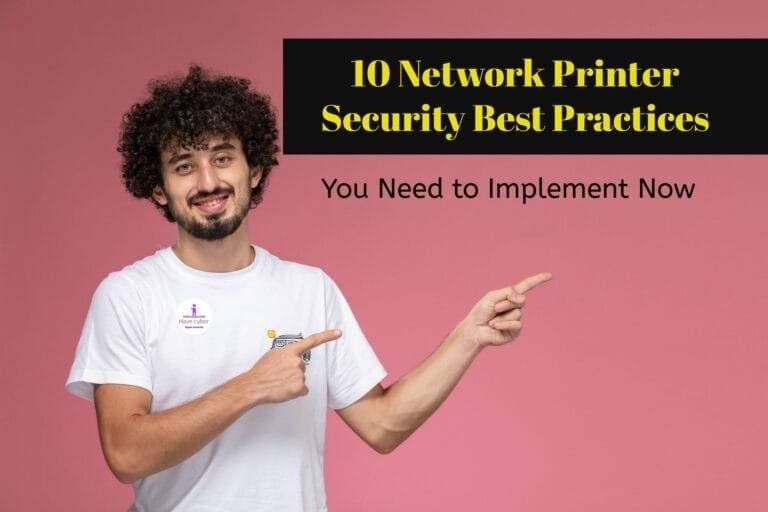Don’t Be Fooled- How to Choose the Right Deception Technology Vendor?
Trying to pick the best deception technology provider out of so many can feel like you’re lost in a maze, where every corner seems to offer the best protection against cyber attacks. Deception technology is all about setting traps with fake weak spots to catch hackers and watch what they do. It’s very important for keeping things secure online. But, with everyone bragging about how great they are, how do you figure out who’s the best match for you?
It all comes down to knowing exactly what your team needs and asking the smart questions. Not everything that shines is precious, and not every provider is going to fit your special needs. You’ve got to find someone who gets what you’re about, can handle your growing needs, and is always coming up with new ideas. Let’s dive into how to pick the perfect partner with ease, making sure your defenses are strong and your stuff is secure.
What is Deception Technology?
Deception technology is like a clever trick in the cybersecurity playbook, designed to outsmart hackers. Picture setting up fake mirrors in a corridor; it confuses an intruder about which way leads to the actual prize. This technology sets up a fake setup with dummy traps and phony bits that look just like your real computer network. It’s as if you’re rolling out the red carpet for hackers, only to guide them into a special area where you can watch what they do, learn from it, and stop them in their tracks.
What’s cool about deception technology is that it doesn’t just sit around waiting for trouble. Instead, it invites attackers in. This gives the good guys a chance to see the attackers in action, figuring out their moves, the tools they use, and what they’re after. This not only confuses and slows down the attackers but also boosts your security by pointing out weak spots and sneaky paths the attackers might use to sneak in. In short, deception technology flips the script on cyber threats, making it a smart and powerful part of a strong cybersecurity plan.
The Rising Need for Deception Technology
In the world of online security today, dealing with cyber attacks using old-school security tools is like showing up to a serious battle with just a tiny weapon. It’s clear now that just having firewalls and antivirus programs isn’t enough anymore. That’s where deception technology comes into play, offering a smarter and more flexible way to defend against these threats.
Deception technology is getting more attention because it’s good at tricking smart hackers who’ve figured out how to get past the usual security measures. Cybercrooks are always getting better, using sneaky strategies and even AI to plot their moves. In this intense online game, deception technology is like a clever trick that fools attackers and spots their tricks before they can get to the important stuff.
Also, businesses are changing a lot these days, with more stuff happening online, people working from anywhere, and all sorts of devices connecting to the internet. This change means hackers have many more chances to try their tricks. The old ways of keeping things secure don’t work as well anymore because the usual security boundaries are fading, and there are more weak spots. Deception technology is a smart security net that fits this new scenario. It’s a forward-thinking and smart way to stay secure that keeps up with fast technology changes and the clever tricks of hackers. Its growing popularity shows how much we need new ideas to deal with these sly cyber troublemakers.
Key Considerations in Selecting a Deception Technology Vendor

Choosing the best deception technology provider is very important because it can really make or break how well your online security works. It’s not just about picking the fanciest technology; it’s also about finding a partner who gets what your situation and problems are all about. Here are some important things to think about when you’re deciding:
- Customization and Scalability: Your deception tool should fit your company like a tailor-made suit, designed just for you. Look for a provider who can make fake traps and decoys that look just like your real stuff and can grow with your company.
- Realism and Diversity of Decoys: How well deception tech works depends a lot on how real the fake traps look. Make sure the provider has a bunch of different, very lifelike decoys that can act just like the real parts of your computer system, from servers and databases to gadgets connected to the internet.
- Integration with Existing Infrastructure: The best deception tools should fit right into your current security setup without any trouble. This way, the deception tech can work with your other security tools, strengthening your overall defense.
- Ease of Deployment and Management: Making things more secure shouldn’t be complicated. Finding a provider that makes it easy to get started and keep things running, without losing quality or power, can save your team a lot of time and effort.
- Intelligence and Analytics Capabilities: One of the big pluses of deception technology is the smart info it gives you from tricking attackers. Pick a provider that can give you detailed reports and useful tips, turning each hack attempt into a chance to make your security even better.
- Proven Track Record and Expertise: Finally, go for a provider that’s known for being great at deception technology. Look for positive reviews, success stories, and awards in the field as signs that they can deliver.
By thinking about these important points, you can team up with a deception technology provider that not only makes your online security stronger but also matches well with what your organization wants to achieve and the challenges you face. This way, you’ll have a solid defense ready for the constantly changing threats in the cyber world.
Common Pitfalls to Avoid
When diving into the world of deception technology, it’s very important to dodge some common mistakes that could weaken your cybersecurity plan. Here are some major slip-ups to watch out for:
- Overlooking User Training: Even the fanciest technology won’t work right if your team doesn’t know how to use it. Make sure everyone knows how to handle and react to the warnings and info the deception tool gives. If you skip this step, you might miss chances to stop attacks.
- Underestimating Maintenance Requirements: Deception setups need regular check-ups and updates to stay sharp. If you don’t keep these fake setups fresh, smart hackers will spot the old tricks and steer clear, making your effort pointless.
- Ignoring the Importance of Realism: How real your fake traps look is super important. If the decoys don’t look and act like your actual system, hackers will catch on fast, and your whole plan to trick them won’t work.
- Focusing Solely on Internal Threats: Deception technology is great for spotting sneaky moves inside your team, but it’s just as important for catching hackers from outside. Don’t just use it to watch your team; its real strength is in dealing with all kinds of threats.
- Neglecting Integration with Other Security Tools: Deception technology shouldn’t be off doing its own thing. If it’s not working together with your other security measures, you might miss out on important information and not respond as well as you could. Making sure it fits in smoothly with your other security efforts makes your defenses even stronger.
By steering clear of these mistakes, you can make the most of deception technology, turning what might be weak spots into strong points for finding and stopping cyber threats.
Making the Decision
Deciding to use deception technology and picking the best provider needs careful thinking, a lot of research, and a good grasp of what your cybersecurity needs are. Here’s a step-by-step guide to help you make this important choice:
- Assess Your Needs: Start by really digging into what your company needs to stay secure, where it might be weak, and what’s super important to keep protected. This deep look will help you figure out how deception technology can make your defenses stronger.
- Research and Shortlist Vendors: With a good idea of what you need, start looking for companies that make this kind of technology. You want to find ones that not only have great technology but also get what’s special about your kind of work and its challenges.
- Evaluate Customization and Integration Capabilities: Make sure the companies you’re thinking about can tailor their technology to fit your needs and that it’ll work smoothly with the security stuff you already have. You’re aiming for a security setup that works together well and can adapt to changes.
- Consider the User Experience: Check how simple the vendor’s system is to use. A system that’s easy to understand and manage can help your team get the hang of it quickly and make their work a lot easier.
- Analyze Cost vs. Benefit: Think about how much the deception tech will cost versus how much it could help, like lowering the chance of hacks, better spotting of threats, and the useful information you can get from the fake setups.
- Request Demos and Trials: Ask for demos or to try the system out before you decide. Using it yourself can show you how well it fits with your setup and how good it is.
- Check References and Reviews: Talk to other companies that use deception technology and look up independent reviews to see how reliable the vendor is and how well they’ve done for others.
By carefully going through these steps, you can choose wisely in a way that not only boosts your online safety with deception technology but also finds you a provider that gets and can meet what your company needs.
In conclusion
In summary, selecting the best deception technology provider is a big move that can strengthen your cybersecurity. By getting what deception technology is all about, seeing why we need such smart solutions more and more, thinking carefully about what to look for in a provider, avoiding easy-to-make mistakes, and going through the choice process wisely, companies can use deception strategies to beat even the sneakiest hackers. It’s not just about how fancy the traps are; it’s also about the valuable insights they provide and how well they fit with your other security measures. With the right plan and the right partner, deception technology can be a key player in your cybersecurity team, turning weak spots into strong points.
FAQs
What is deception technology?
Deception technology involves creating fake systems, data, and infrastructures to trick hackers into revealing their tactics, thereby protecting your real assets.
Why do I need deception technology?
With cyber threats becoming more sophisticated, traditional security measures might not be enough. Deception technology adds an extra layer of defense by misleading attackers and learning from their methods.
How do I pick the right vendor for deception technology?
Look for vendors that offer customizable solutions that mimic your real environment closely, integrate seamlessly with your existing security setup, and provide actionable intelligence from interactions with attackers.
Are there common mistakes to avoid when choosing a vendor?
Yes, common mistakes include neglecting user training, underestimating maintenance needs, focusing only on internal threats, and failing to integrate the technology with other security tools.
What should I consider when making my decision?
Assess your specific security needs, research and shortlist vendors, evaluate their customization and integration capabilities, consider costs vs. benefits, and check references and reviews.







